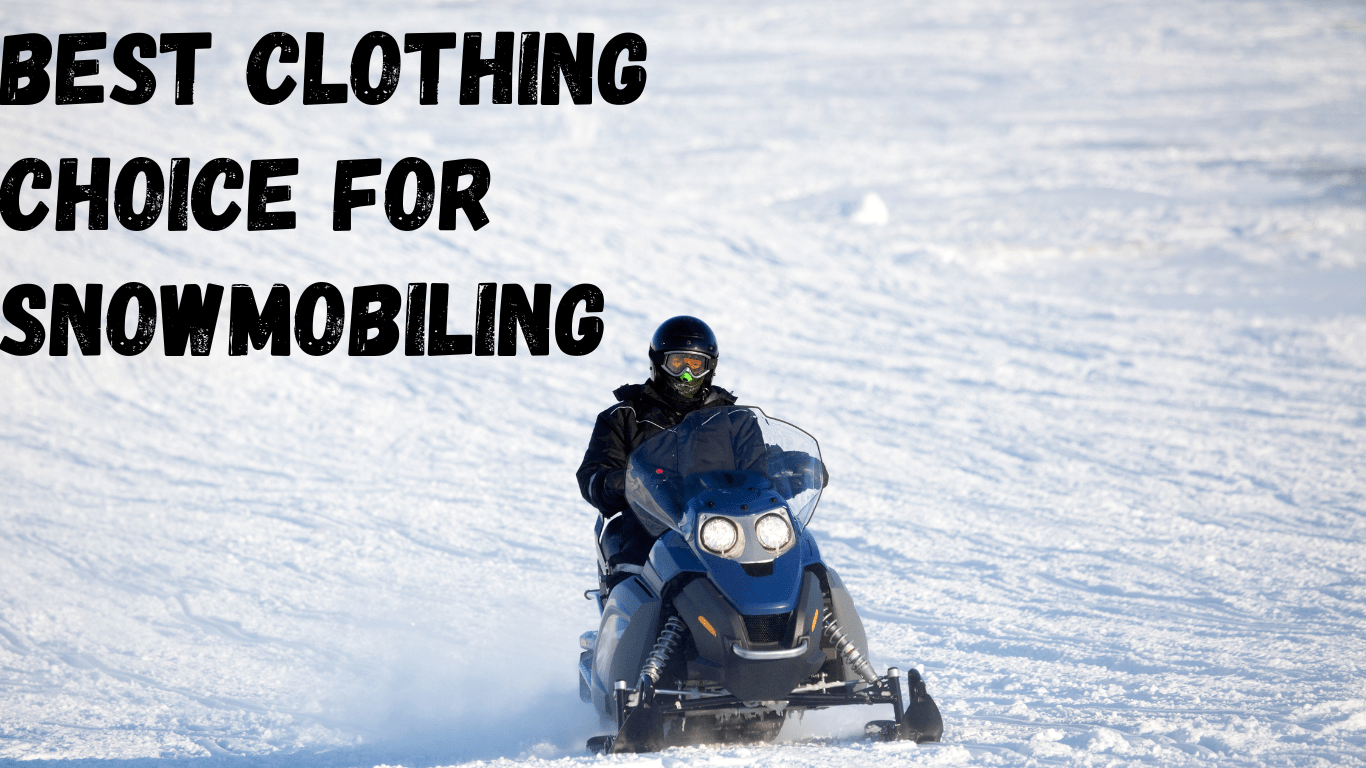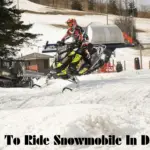Introduction:
Wearing a perfect suit before going out for Snowmobiling is very essential to maintain your body temperature. In this article I will share with you, what to wear during snowmobiling and what to avoid.
What to avoid?
Clothes that does not dry quickly and absorbs water should be avoided. Hypothermia can occur if you wear such clothes, which absorb water from the cold air and decrease your body temperature. A good example of such clothes is cotton. Cotton is super absorbent and when it gets wet it can absorb 27 times its weight in water.
What specifications must be present in your suit?
Water-proof and wind-proof:
Ensure that your snowmobiling suit is made from high-quality water-proof and wind-proof material to secure you from snow rain and cold air. Gore-tex and technical clothes like Gore-tex are famous for water resistance and breathability.
Insulation:
To trap the heat of the body and to warm your body during long rides a well-insulated suit is very essential. The level of insulation depends upon the weather condition and your choice.
Breathability and Ventilation:
Snowmobiling can cause sweating which can lead to moisture buildup. So to tackle this kind of situation look for suits with ventilation zippers and mesh-lined vents that allow excess heat and moisture to escape and help you to regulate your body temperature.

1)Baselayer; the first line of defense:
The base layer plays a very important role in regulating your body temperature and wicking away moisture. The base layer means the first layer of clothes you wear. The layer or piece of clothes that touches your skin directly is called the base layer. Must consider these factors before choosing a base layer.
Material:
To keep the sweat away from your body, choose moisture-wicking material such as merino wool or synthetic blends.
Layers:
Choose the layer with varying thicknesses so that you can adjust it at different temperatures. A lightweight layer can protect you from mild weather conditions. While a thick base layer protects you from extreme weather conditions.
2) Mid-layer; Adding warmth and insulation:
Mid-layer provides you additional ventilation and warmth that acts as a buffer between your base layer and outer snowmobile suit. The layer that you wear after the base layer is the mid-layer. When you are selecting this layer considered these factors:
Fleece jackets and hoodies:
Fleece is an excellent mid-layer because of its excellent ventilation and lightweight design. As the weather changes, you can easily remove or add fleece jackets or hoodies.
Insulated Vest:
Insulated Vest are versatile and provide warmth without disturbing the movements of arms. These vests are an excellent choice for those riders who prefer more moveability.
Insulated pants or snowmobile bibs:
If there is not enough ventilation in your snowmobile suit then you can wear insulated pants or snowmobile bibs as a middle layer to keep your legs warm.
3) Snowmobiling jacket; additional protection:
Wearing a jacket provides you additional protection against snow and cold temperature. Ensure that your jacket contains these properties:
Waterproof and Windproof:
Just like a snowmobiling suit make sure that your snowmobiling jacket is made of windproof and waterproof material to keep you dry and warm.
High collar and Hood:
A high collar and well-fitted hood greatly help to protect your neck and head from snow and cold air.
Adjustable Cuffs and Waist:
Having adjustable cuffs and a waist allows you to create a snug fit preventing snow from entering the jacket during rough rides.
Pockets and storage:
Choose a jacket with a large number of pockets. This kind of snowmobiling jacket greatly helps you to carry your goods.

4) Snowmobiling Gloves:
To protect your hands from cold air and low temperature, well-insulated gloves are required. Before buying your gloves must consider these things:
Insulation:
Your gloves must be made of insulating material so that they can warm your hands.
Wind-proof and water-proof:
Your gloves must be made of windproof and waterproof material to protect you from extreme weather conditions.
Gauntlet style:
Gauntlet-style gloves extended over the wrists can be tightened and plays a very important role in preventing the snow from entering the gloves.
Reinforce palms:
Choose gloves with reinforced palms that can increase the grip and helps you to give better control on a snowmobile.
5) Snowmobiling boots:
To warm your feet, boots are required. While buying boots consider these factors:
Insulation:
Your boots must be well insulated so that they can keep your feets warm.
Waterproof:
Choose boots made up of waterproof material to prevent snow and moisture from seeping in.
Non-slip soles:
Choosing boots with nonslip soles is very crucial because they can give you better traction when walking on ice or snowy Terrain.
High-cut design:
High-cut boots provide ankle sport and help to keep the snow out of your boots. This kind of boots gives you additional protection.

6) Snowmobiling socks:
To keep your feet dry and warm, choose socks made of moisture-wicking material. Again, I recommend avoiding cotton as it can be very dangerous.
Face marks or Balaclava:
It is very important to wear a Balaclava when the wind is icy to protect your face and neck from the snow. Wear breathable and moisture-wicking masks.
7) Goggles or snowmobile helmet with electric field; Clear vision is the key:
Ensure clear vision by wearing goggles or helmets with electric shields. Goggles become an additional protective layer by joining with Balaclava. Electrically shielded helmets prevent fogging and ice buildup.
8) Snowmobiling Helmet:
Always remember that safety is the priority. Wearing a helmet is very crucial for your ride. Always wear an approved helmet. You can choose a helmet with additional features like a breath deflector to prevent fogging.
9) Additional Accessories: Extra Comfort and Convenience:
Snowmobile Suspenders:
Suspenders can help keep your snowmobile bib in place and prevent sagging during rides.
Hand and Toe Warmers:
Disposable hand and toe warmers can provide extra warmth. during particularly cold rides.
Snowmobile Backpack:
A small backpack allows you to carry essentials like snacks, a water first aid kit, and extra clothing layers.
Conclusion:
Wearing proper clothes are very essential for a secure ride. Avoid wearing cotton because it can be very dangerous. Remember that the weather condition can change rapidly during snowmobiling trips, so always be prepared with extra layers.
Have a happy ride!

FAQs
Are there age restrictions for snowmobiling?
Yes, most of the regions have age limits. So before going out for snowmobiling must read your regional rules and regulations carefully.
Do in need a license for snowmobiling?
Most of the regions require a license for snowmobiling. But some do not require so I again advise you to read your regional rules and regulations carefully before going out for snowmobiling.



